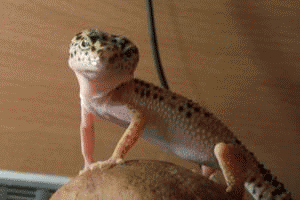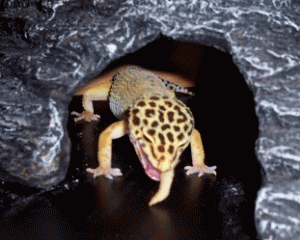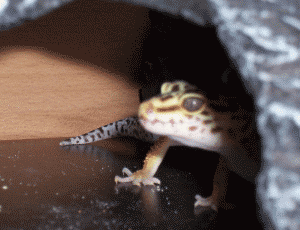Water

Vitamin supplements
Another must-have is a small dish containing calcium powder with a D3 vitamin supplement (Vetark Nutrobal or Repashy Vitamin A Plus are recommended). The gecko will lick this as and when it needs it. This is a vital source of vitamins and calcium that are essential for maintaining the gecko's health. This should be replenished at least once a fortnight.Feeding your gecko

Geckos less than a year old should be offered food once a day, adult geckos once every two days. Don't be alarmed if your gecko declines to eat - it may be about to shed its skin or it may want to deplete its fat reserves for a few days. When you feed your gecko, it is recommended that the food be lightly dusted with calcium powder.
The best time to feed a gecko is in the early evening (7-9 pm) when it becomes active after its daytime snooze. Feeding can typically take 10-20 minutes - the gecko will know when to stop and will not 'over indulge'. For some owners, this is the most rewarding part of having a leopard gecko as a pet.

Usually, a meal of 4-8 items will be sufficient, although the gecko may sometimes eat less or more than this. Young leopard geckos may try to eat more than they can digest, so be careful not to over-feed. If a gecko is eating too much, it may bring up partially eaten food shortly afterwards - a sign that you are over-feeding.
As a treat, or if the gecko is reluctant to eat, offer him or her a wax worm. These have next to no nutritional value but geckos find them irresistible. You should regard wax worms as a luxury, as they can cause health problems if eaten to excess (i.e. more than five in one week). If you find that your leopard gecko is only eating wax works, cut these completely out of his diet. If he then refuses to eat for weeks on end, it is imperative that you take him to a vet.

You may place in the vivarium a dish containing mealworms so that the gecko can 'help himself' when he is feeling peckish. This is not advisable as the worms may escape and cause the gecko distress and harm (e.g. by nibbling its toes when it is asleep). This is not required provided you feed the gecko regularly.
Choice of gecko food
Now that they have become readily available, crickets have supplanted mealworms as the staple of choice for most gecko owners.
Special containers (cricket pens) can be purchased to house the crickets until they are fed to the gecko. These include a place where the crickets can shelter, as well as a space for food and moisture. Crickets need to be looked after almost as pets if they are be beneficial to the gecko. This means feeding them and removing any dead insects on a daily basis.
A pair of tweezers can be useful to transport a cricket from its pen into the gecko's vivarium. Normally, the gecko will chase after the cricket once he has spotted it. If the gecko has difficulty catching it, it may be a good idea to rip off the cricket's back legs (it's not as gruesome as it sounds).

For many gecko owners, mealworms are preferable to crickets as they are easier to handle and do not escape so easily. Crickets also tend to be quiet noisy and smell. Don't believe the horror stories about impaction caused by the worms' chitinous skin; mealworms may not be as nutritious as crickets but they are a perfectly adequate substitute, especially if supplemented with the occasional cockroach.

Why isn't my gecko eating?
One of the main worries about keeping leopard geckos is what to do when they stop eating. Usually, there is nothing to worry about. Leopard geckos will always give up eating food for a day or two whilst they are shedding their skin, and may even begin fasting a day or two beforehand.
Temperature can also effect a gecko's eating habits. If it is too hot or too cold, the gecko will stop eating because it knows it will not be able to digest the food properly. If the tank is cold over a sustained period, the gecko may begin to go into hibernation mode and live off its fat reserves in its tail. This can be cured by ensuring the correct temperature gradient is maintained across the vivarium.
Dehydration is a third, less likely, possibility. When the gecko stops drinking from its water bowl, it may be necessary to force water into its mouth with an eyedropper. Spraying the gecko with water may also help - the gecko will lick the water droplets off itself.

If your leopard gecko shows sign of drastic weight loss and/or hasn't eaten for two or three weeks, you must take him to the vet. If you act quickly enough, there's a chance that the vet may be able to save your gecko's life by putting it on a course of anti-biotics and vitamin supplements. If you leave it too late, your gecko will have to endure a long and painful death - euthenasia performed by a vet is the kindest option if the gecko cannot be cured.
© James Travers 2014